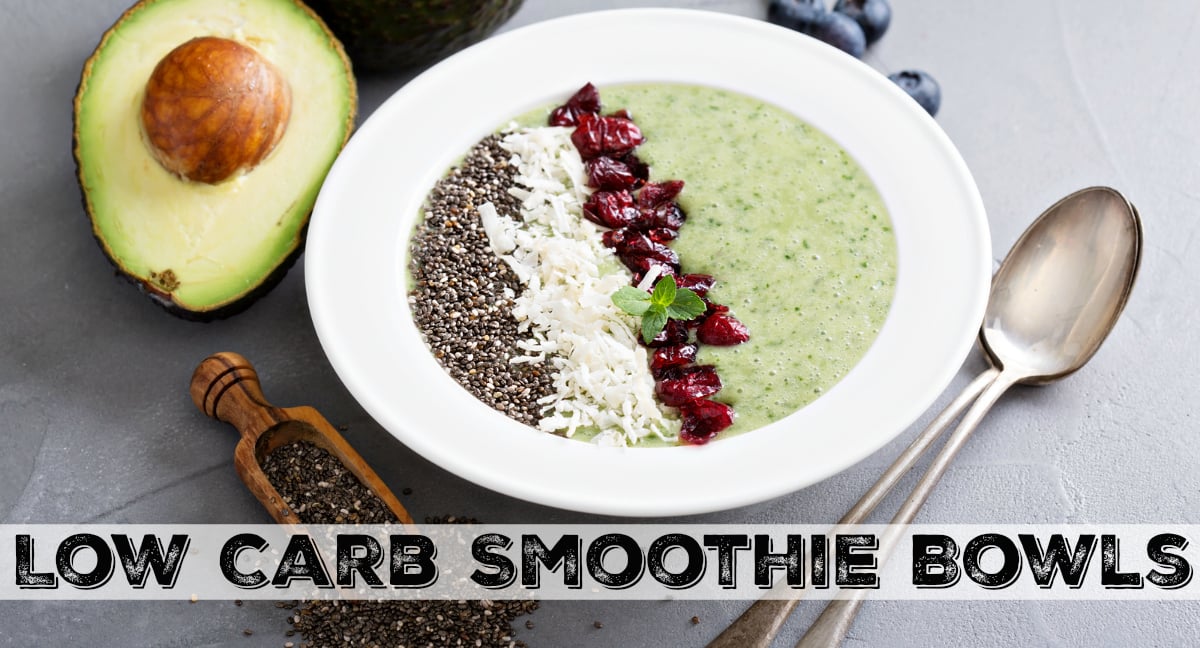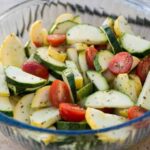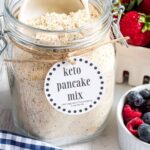Craving a vibrant, healthy breakfast or snack that won’t derail your low-carb lifestyle? Dive into the delightful world of low-carb smoothie bowls! This guide unveils the secrets to crafting a creamy, visually stunning bowl packed with flavor and nutrients. From selecting the perfect low-carb fruits and fats to mastering blending techniques and creating breathtaking toppings, we’ll equip you with the knowledge to create a smoothie bowl that’s as delicious as it is beautiful.
We’ll explore a variety of low-carb ingredients, offering options to suit different tastes and dietary needs. Learn how to achieve the ideal consistency, discover visually appealing topping combinations, and master the art of presentation. Get ready to transform your mornings (or any time of day!) with this ultimate guide to the perfect low-carb smoothie bowl.
Base Preparation Techniques
Creating the perfect low-carb smoothie bowl begins with a flawlessly blended base. The texture should be thick, creamy, and rich, providing the ideal canvas for your toppings. Achieving this requires careful consideration of ingredients and blending techniques. The key is to balance frozen ingredients for thickness with liquid for smooth blending, all while maintaining a low-carb profile.
The optimal blending technique involves a gradual increase in speed, starting low and gradually increasing to high, to avoid splashing and ensure thorough mixing. Using a high-powered blender is highly recommended for achieving the desired creamy texture, particularly when dealing with frozen ingredients. Avoid over-blending, as this can lead to a watery or overly processed consistency. A well-blended base should be thick enough to hold its shape, yet still pourable.
Frozen Ingredient Base Preparation
Preparing a low-carb smoothie bowl base with frozen ingredients provides a naturally thick and cold foundation. This method offers a convenient way to create a thick base without relying on added thickeners.
- Begin by combining your chosen frozen low-carb fruits and vegetables in your blender. Imagine a vibrant mix of deep-purple frozen berries, perhaps a handful of frozen spinach for added nutrients, all nestled amongst chunks of frozen avocado for creaminess.
- Add your liquid base – unsweetened almond milk or coconut milk are excellent choices. Start with a small amount, about ¼ cup, and blend on a low speed. Observe the consistency; you want a thick, almost paste-like consistency at this stage. The liquid prevents the blender from seizing up.
- Gradually increase the blender speed to medium, then high, blending until the mixture is completely smooth and creamy. The ice crystals should be fully broken down, resulting in a velvety texture. If needed, add more liquid, a tablespoon at a time, until the desired consistency is reached.
- Taste and adjust sweetness as needed with a low-carb sweetener like stevia or erythritol. A touch of vanilla extract can elevate the flavor profile. The finished base should be thick enough to hold its shape when spooned.
Fresh Ingredient Base Preparation
Using fresh ingredients requires a slightly different approach, as the lack of frozen components necessitates a different strategy for achieving the desired thickness. This method offers more flexibility in terms of ingredient choices and allows for the incorporation of fresh herbs or spices.
- Start by combining your fresh low-carb ingredients in the blender. Picture vibrant green spinach leaves mingling with chunks of ripe avocado, creating a verdant base. A small amount of unsweetened shredded coconut can add texture and flavor.
- Add your liquid base, starting with a smaller quantity (approximately ¼ cup) of unsweetened almond milk or coconut milk. Begin blending on a low speed, gradually increasing the speed as the ingredients combine. The fresh ingredients will blend more easily than frozen ones.
- Add ice cubes gradually, one or two at a time, while blending on a medium-high speed. The ice will help to thicken the mixture and create a cooler, more refreshing bowl. The ice cubes should be thoroughly crushed and incorporated into the smooth base.
- Once the mixture reaches your desired thickness and consistency, taste and adjust the sweetness and flavor with low-carb sweeteners and extracts. The final product should be thick and creamy, yet still smooth and easily spreadable.
Liquid Consistency and Texture
The amount of liquid used significantly impacts the final texture of the smoothie bowl. Too much liquid results in a thin, watery bowl that won’t hold its shape, while too little liquid leads to a thick, difficult-to-blend mixture. The ideal consistency is thick and creamy, yet still pourable and spreadable. It should be able to hold toppings without becoming overly runny. Experimentation is key to finding the perfect balance for your preferred texture. Remember to always start with less liquid and gradually add more until you reach the desired consistency.
Presentation and Serving Suggestions

The final flourish in crafting the perfect low-carb smoothie bowl lies in its presentation. A visually appealing bowl elevates the entire experience, transforming a healthy meal into a culinary masterpiece. Careful attention to plating and garnishing can dramatically enhance the sensory appeal, making it as enjoyable to look at as it is to eat.
The ideal low-carb smoothie bowl should be a vibrant spectacle of colors and textures. Think of it as a miniature landscape, thoughtfully composed to stimulate the appetite. The base, a creamy swirl of blended goodness, should be the canvas upon which your artistic touches are applied.
Plating and Garnishing Techniques
The bowl itself plays a crucial role. A wide, shallow bowl allows for a generous spread of the smoothie base, providing ample space for artful garnishing. Consider the color of your bowl; a neutral tone, like white or a light gray, will allow the vibrant colors of your toppings to truly pop. Alternatively, a dark bowl can create a dramatic contrast, making the toppings appear even more striking. Garnishing should be both visually appealing and complementary to the flavors of the smoothie. Consider using a variety of textures and colors: a sprinkle of chopped nuts for crunch, a scattering of chia seeds for visual interest and added nutrition, vibrant berries for bursts of color and sweetness, and perhaps a few thin slices of fresh coconut for a tropical touch. The arrangement of garnishes should be deliberate, creating a pleasing visual pattern that invites the eye to explore. A spiral of shredded coconut, a carefully placed cluster of berries, or a symmetrical scattering of nuts can all add to the overall aesthetic appeal.
Serving Suggestions
A perfectly crafted low-carb smoothie bowl is more than just a breakfast option; it can be a versatile component of a complete low-carb meal or a refreshing midday snack.
- Pairing with Savory Toppings: Imagine a base of creamy avocado and spinach smoothie, topped with crumbled bacon, a fried egg, and a sprinkle of everything bagel seasoning. The salty, savory elements complement the creaminess of the avocado, creating a satisfying and surprisingly delicious combination. This option is perfect for a hearty brunch or a light lunch.
- Accompanied by a Low-Carb Side: A vibrant berry smoothie bowl, adorned with slivered almonds and a drizzle of sugar-free maple syrup, pairs beautifully with a side of grilled chicken or salmon. The sweetness of the berries balances the savory protein, creating a well-rounded and satisfying meal. This is an excellent option for a balanced and protein-rich dinner.
- Served with a Low-Carb Beverage: A refreshing cucumber and mint smoothie bowl, garnished with fresh mint leaves and a squeeze of lime, is wonderfully complemented by a glass of unsweetened iced tea or sparkling water. The light and refreshing nature of both the bowl and the beverage make this an ideal option for a light lunch or an afternoon pick-me-up.
Sensory Experience of a Perfect Low-Carb Smoothie Bowl
The sensory experience of enjoying a perfectly made low-carb smoothie bowl is a multi-faceted delight. The initial visual impact is striking – a vibrant array of colors and textures beckoning to be tasted. The aroma, depending on the ingredients, might be subtly sweet from berries, refreshingly herbaceous from mint, or subtly nutty from almonds. The texture is equally crucial; a creamy, smooth base provides a delightful contrast to the crunch of nuts or the burst of juicy berries. The taste is a harmonious blend of flavors, carefully balanced to create a satisfying and unforgettable experience. Each bite is a symphony of textures and tastes, a culinary journey that engages all the senses. The coolness of the smoothie on a warm day, the subtle sweetness, the refreshing burst of flavors – these are all elements that contribute to the overall sensory experience, transforming a simple meal into a moment of mindful indulgence.
Creating the perfect low-carb smoothie bowl is a journey of culinary exploration, balancing nutrition, texture, and visual appeal. By carefully selecting your ingredients, mastering blending techniques, and thoughtfully arranging your toppings, you can craft a truly satisfying and aesthetically pleasing meal. Remember, the possibilities are endless – experiment with different flavors and combinations to find your signature bowl. So, grab your blender, gather your ingredients, and embark on this delicious adventure! The creamy texture, vibrant colors, and satisfying flavors await.
FAQ Explained
Can I use frozen berries in a low-carb smoothie bowl?
Yes, frozen berries are excellent for creating a thicker, colder smoothie bowl. Just be mindful of their added sweetness.
What if my smoothie bowl is too thick?
Add a splash of unsweetened almond milk or water until you reach your desired consistency.
How long can I store a leftover smoothie bowl?
Store leftover smoothie bowls in an airtight container in the refrigerator for up to 2 days. Toppings should be added just before serving.
Are there any low-carb sweeteners besides stevia and erythritol?
Yes, monk fruit and allulose are also popular low-carb sweetener options.
What are some creative low-carb topping ideas beyond the ones listed?
Consider shredded coconut, chopped nuts (macadamia, pecans, almonds), chia seeds, or unsweetened cocoa nibs.


